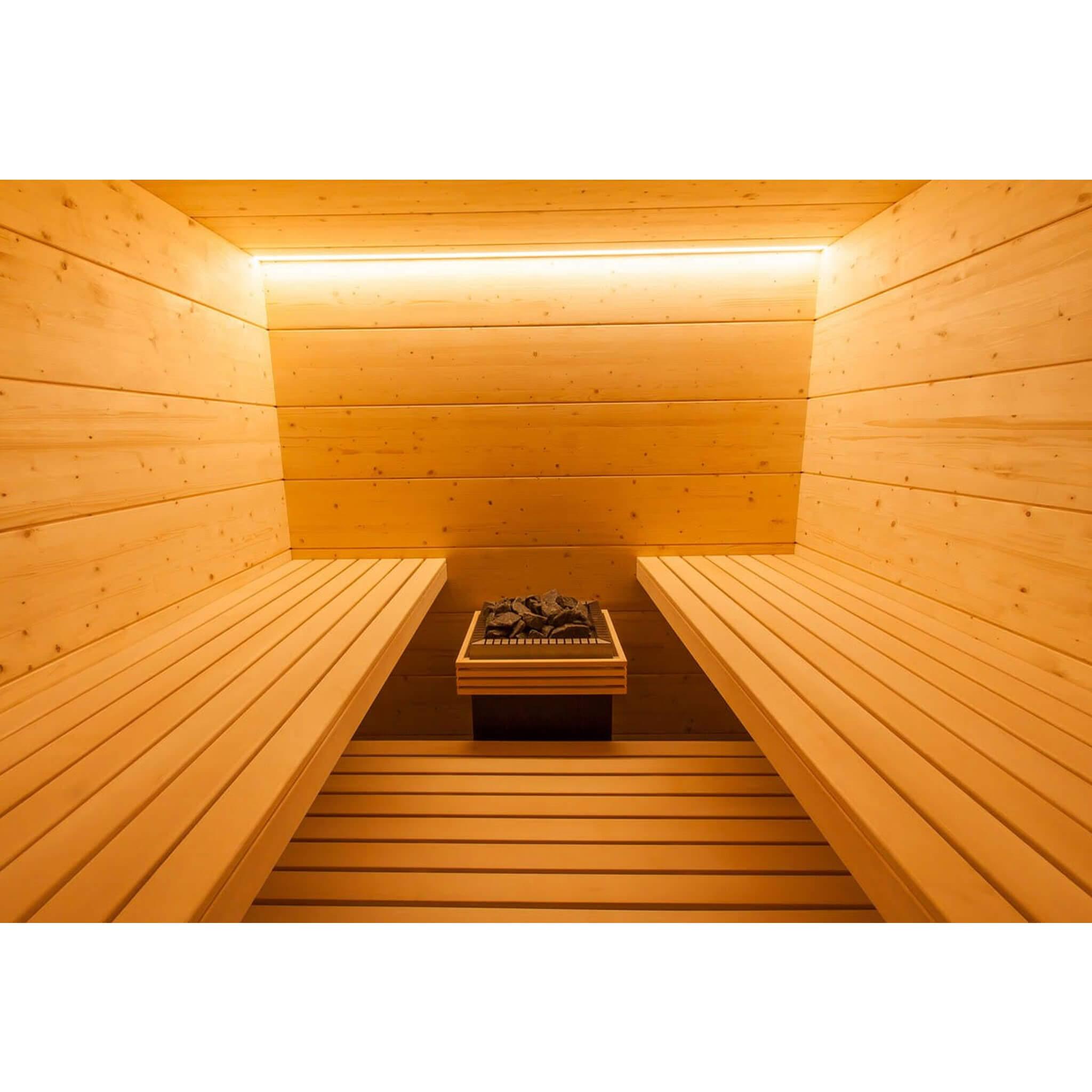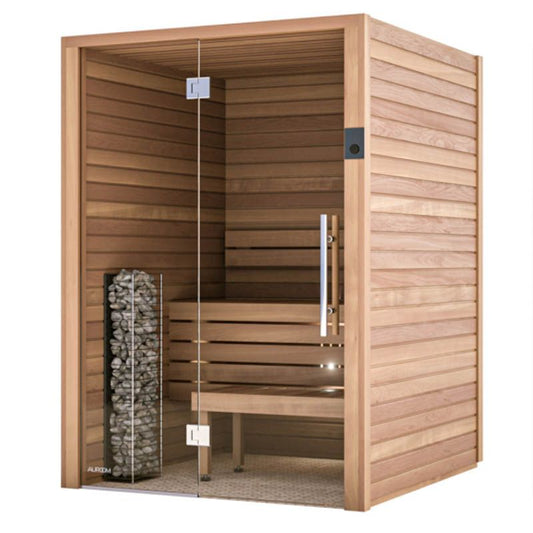Traditional Sauna - An Overview
Traditional Sauna - An Overview
Blog Article
The Main Principles Of Traditional Sauna
Table of ContentsTraditional Sauna Fundamentals Explained9 Easy Facts About Traditional Sauna ShownAn Unbiased View of Traditional SaunaThe 7-Minute Rule for Traditional SaunaAn Unbiased View of Traditional Sauna
Many of the weight shed in a sauna is water loss and is re-gained upon rehydrating. However, undeniably sauna can be an integral part of a healthy and balanced weight management program. To look at the distinctions in between standard and IR saunas, I will certainly divide these right into proven, theoretical, and produced differences.Thus, the hottest point in the saunawhich is at the ceiling straight over the sauna heateris commonly in between 185 and 190 F. Claims that a traditional sauna exceeds 200 F is merely not real and not relevant for electrical saunas offered in the US. The temperature for a far-infrared sauna is typically set between 120 and 140 F; nonetheless, unlike the traditional sauna, the goal in and IR area is not to accomplish a heat.
As a result of this, the temperature distinction is virtually unimportant, since extreme sweating causes both sauna kinds, but the method of warming the body is various. In an IR sauna the bather will really feel warm and will sweat a lot, yet at much lower temperature levels. Traditional Sauna. Therefore, if the goal is to invest longer durations of time in the sauna, the IR sauna is a good selection

The Best Guide To Traditional Sauna

When the high temperature is accomplished, the aspects cycle on and off to preserve the high temperature. Traditional Sauna. The majority of traditional sauna users delight in pouring water over the rocks to produce heavy steam to increase sauna moisture levels. The benefits of pouring water over the rocks include: making the room much more comfortable, moistening the nasal passages, and allowing the use of aromatherapy by blending essential oils with the water
In a far-infrared sauna, the heat waves penetrate the body to effectively heat the body and raise the body core temperature. To attain this raised temperature level, Far-infrared emitters develop infrared power which is close to the exact same wavelength as that which the body naturally emitsoften referred to as the "Vital Range" of 7 to 14 microns), so the power is well obtained by the body.
When the power goes into the body, it triggers the body temperature to enhance and ultimately results in perspiration. In an infrared sauna it is very important for the emitters/heaters to continue to be on virtually frequently. Given that there is no mass of rocks to preserve warmth, the sauna will certainly cool if the emitters turned off.
The Ultimate Guide To Traditional Sauna
As discussed above, the sauna bather in an infrared space desires to place himself in front of running emitters to get optimal gain from the heat. The heating time for the two rooms can be very various, depending upon how the rooms are utilized. For a standard sauna, a bather should enable 30-40 minutes for the room to accomplish a desired temperature level and to properly pre-heat the rocks.
A well constructed sauna will typically attain a temperature of 150-160 F in concerning 30-40 minutes. For hotter temperatures, the room may require to warm for a longer duration.

Standard saunas tend to be larger (hence make use of even more electricity) than infrared saunas, although standard saunas are absolutely readily available in one and 2 individual dimensions. For a two-person traditional sauna, 5x6 or 5x7 dimension is most preferred. The reference leading bench can pleasantly seat 2 or three individuals and is likewise long sufficient to rest throughout the sauna session.
The Ultimate Guide To Traditional Sauna
The ordinary price per kWH of power in the united state is around $0.11 - Traditional Sauna, so a 4.5 kW heating unit will certainly set you back roughly $.50 to run for one hour, if the heating unit runs continually for one hour. Commonly a sauna heater will certainly compete 75% of the initial hour and 50% of subsequent hours on because the Clicking Here aspects cycle once the established temperature level is achieved
A 2 individual far-infrared room is usually physically smaller sized than a standard sauna, commonly concerning 4' x 4' or smaller sized. The IR heater is normally 1.5-1.7 kW using a 120 volt 15 amp plug-in service. Considering that the room can be utilized faster than a sauna space, we will certainly presume the area is used for to of an hour including warm up time.
Ultimately, there is a rarely discussed distinction in the social experience in between both spaces. While our culture has actually lost some of the social benefit of the typical sauna experience, it can be very socially rewarding. From household time in the sauna, to heart-felt conversations with considerable others, to sauna partiesthe traditional sauna experience can bring about intimate mingling.
The Facts About Traditional Sauna Revealed
The majority of higher end infrared rooms consist of colored light treatment, sound systems and full-glass fronts.
Report this page